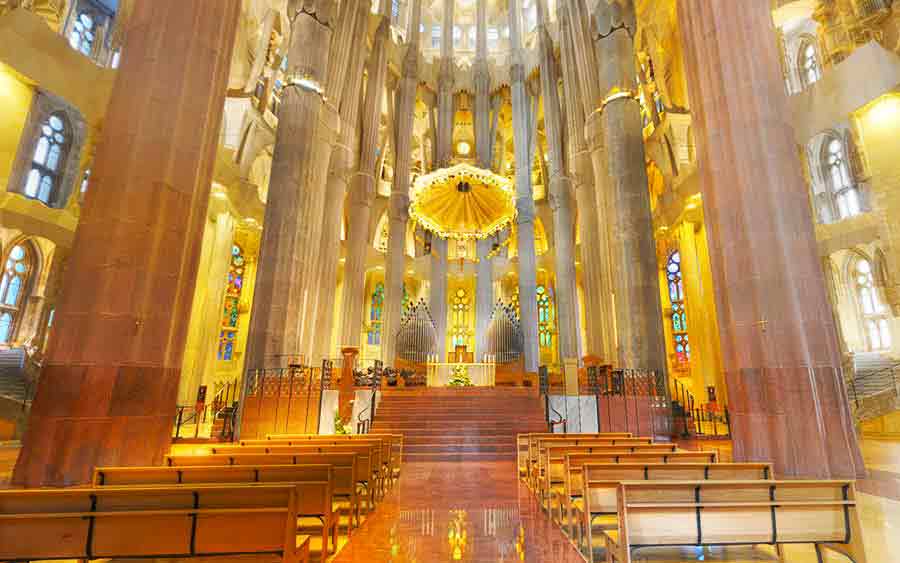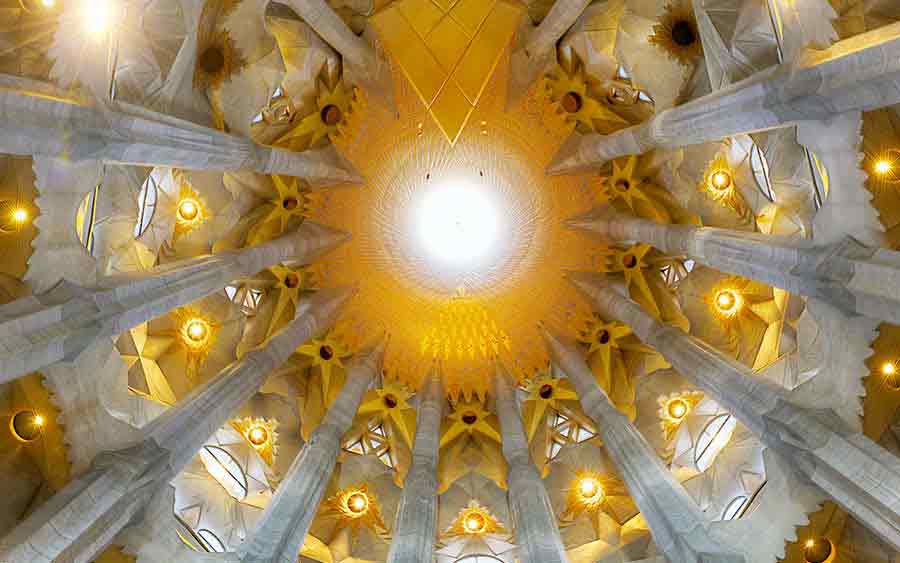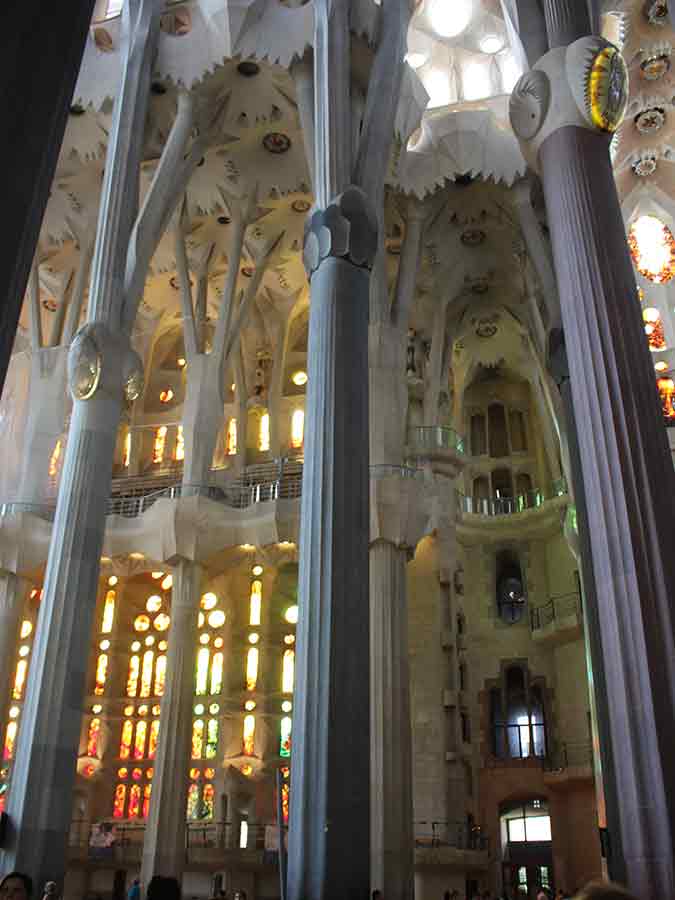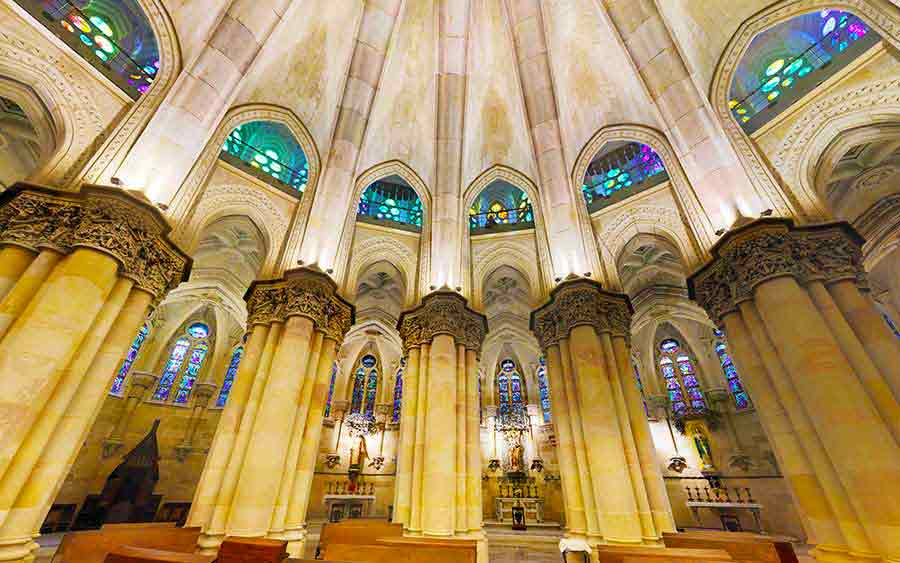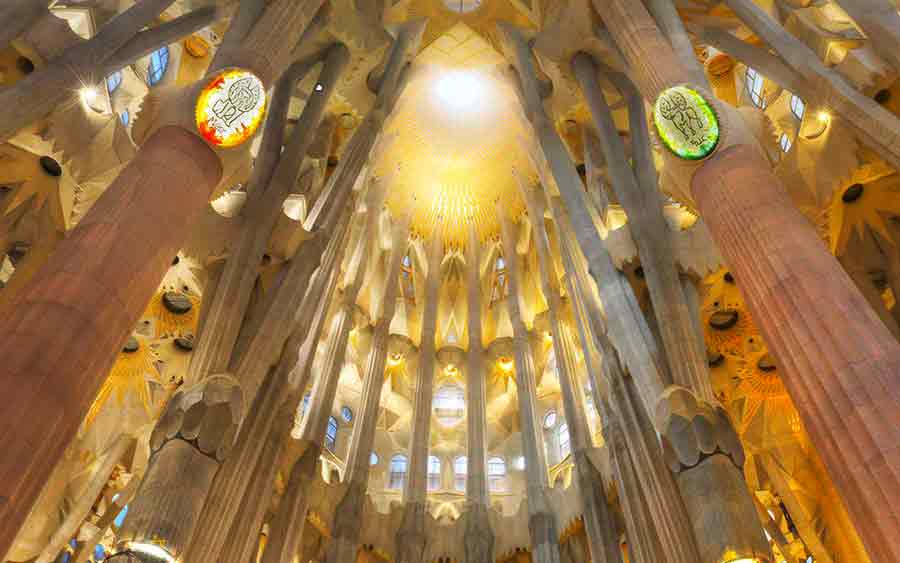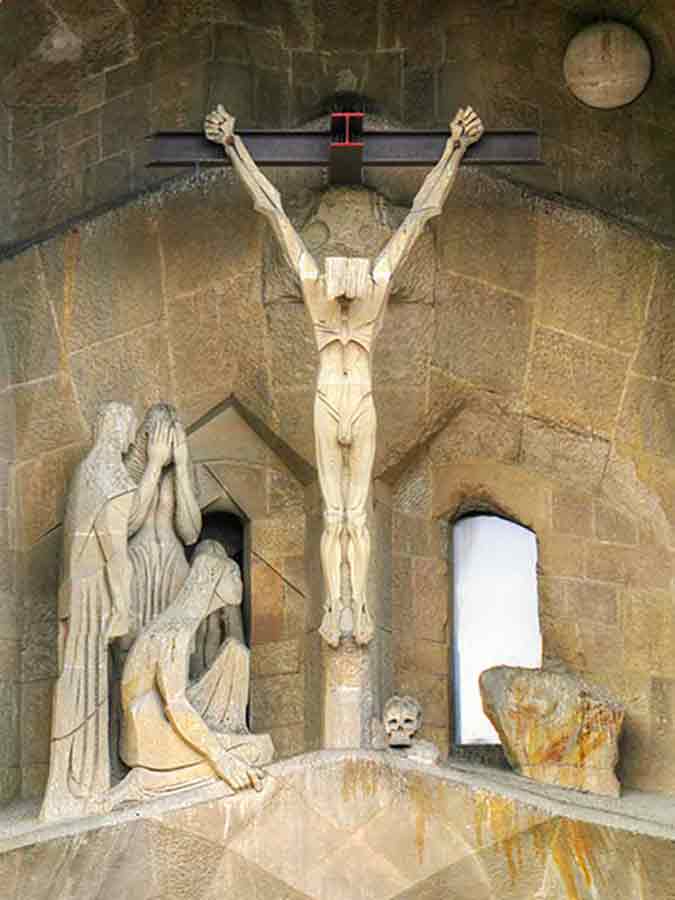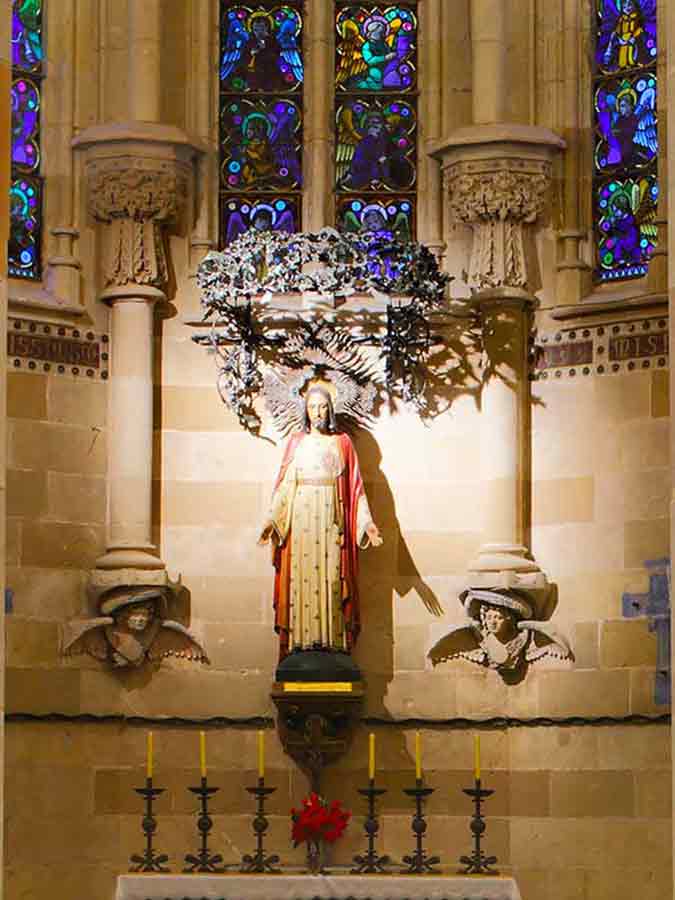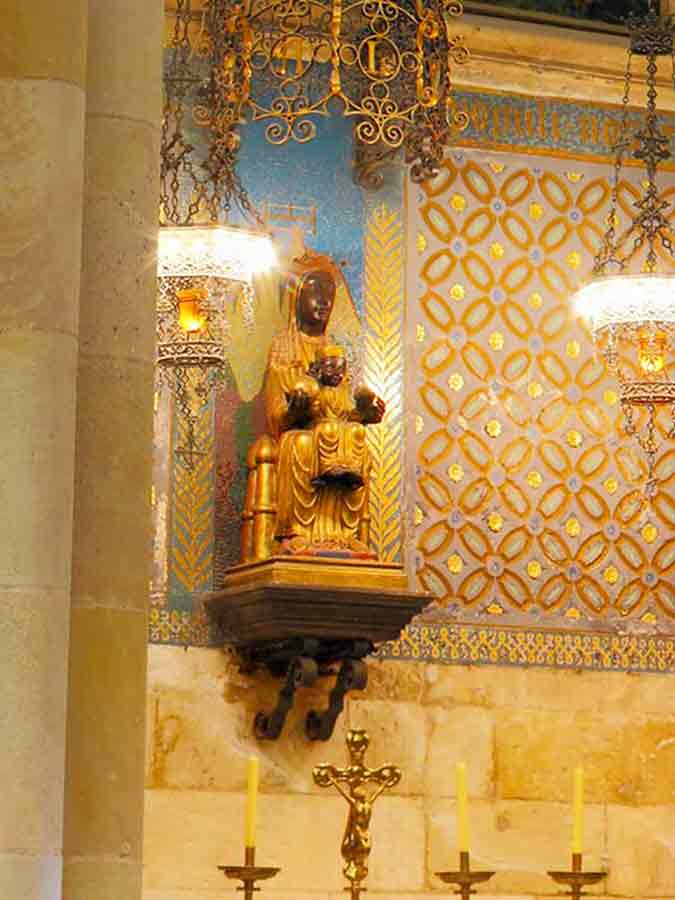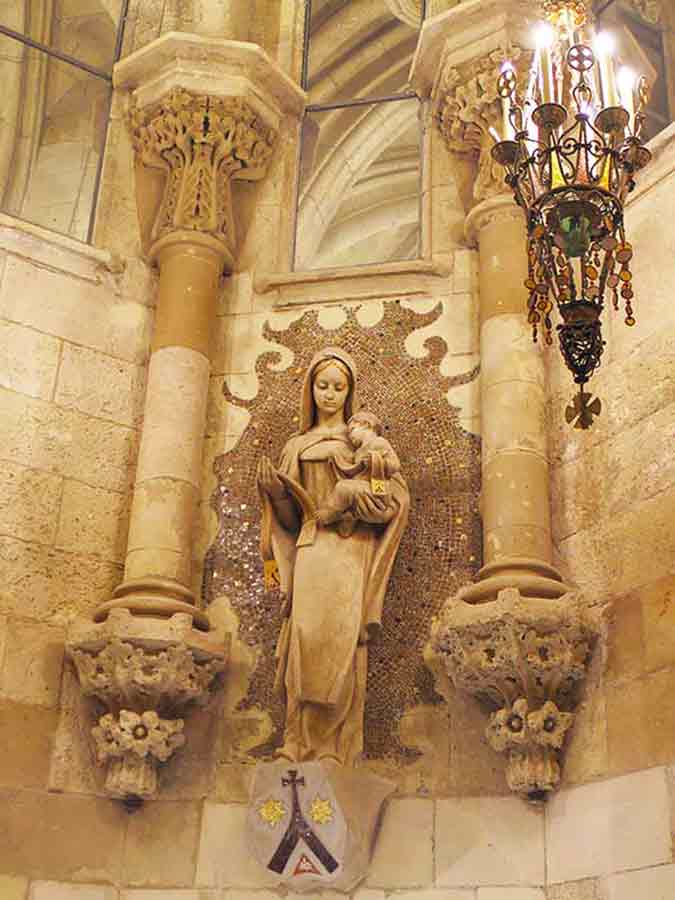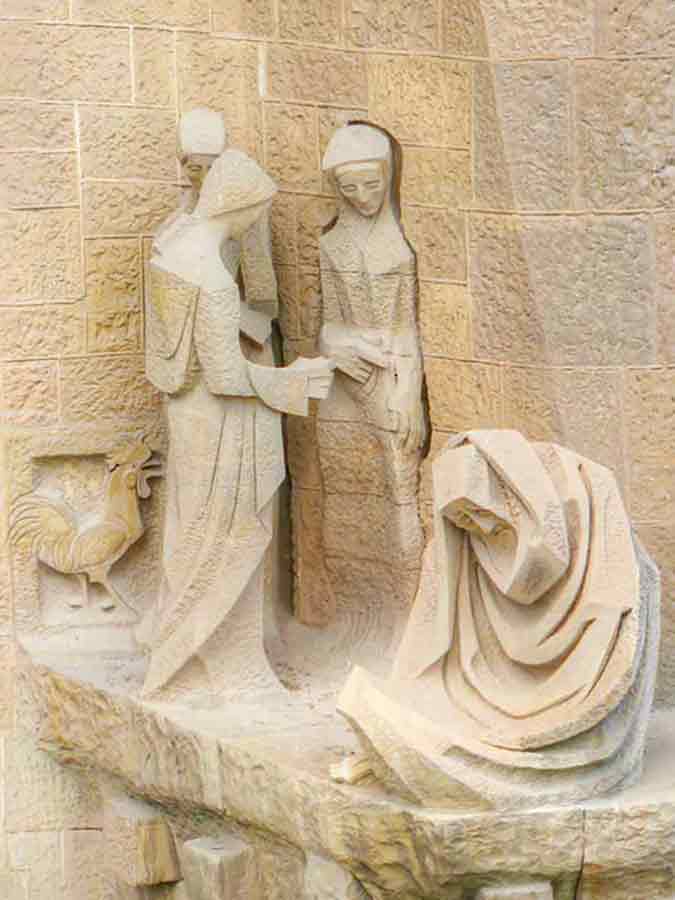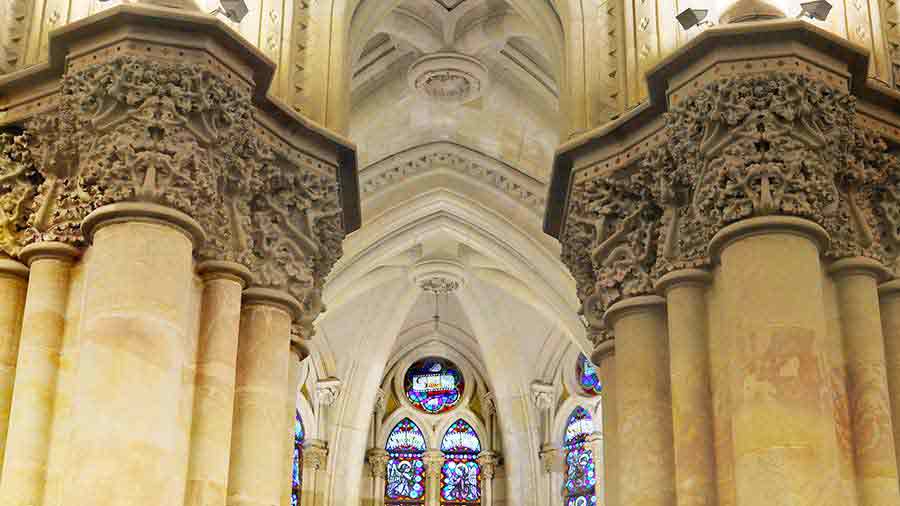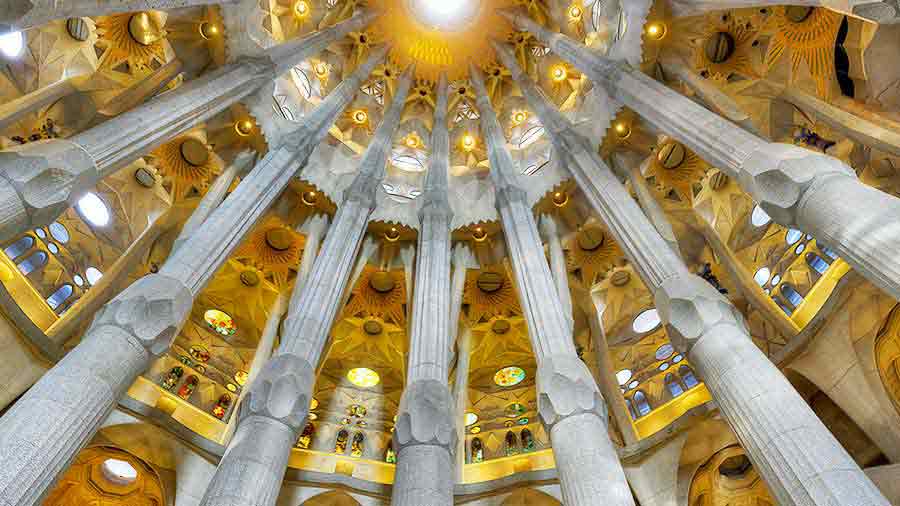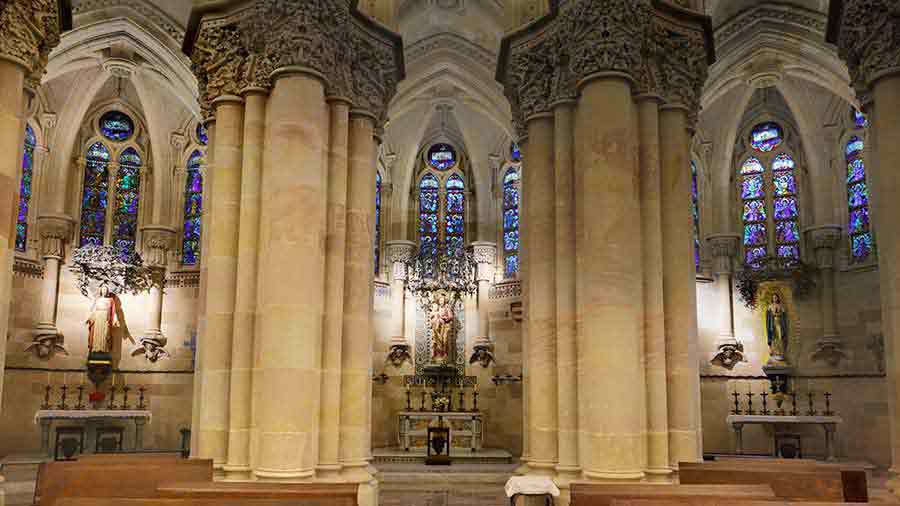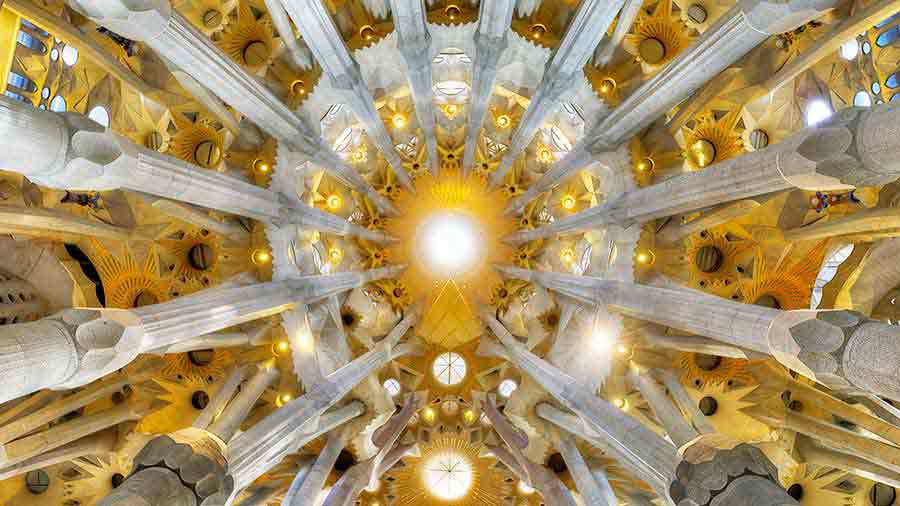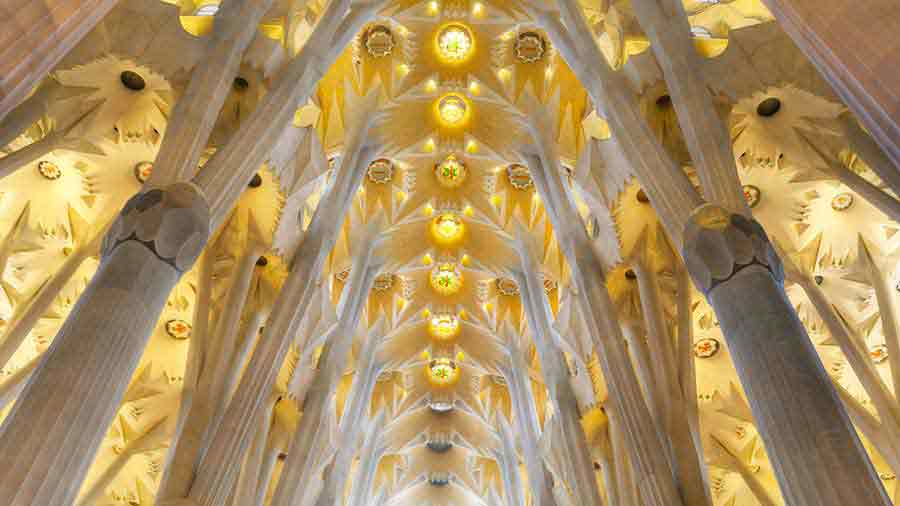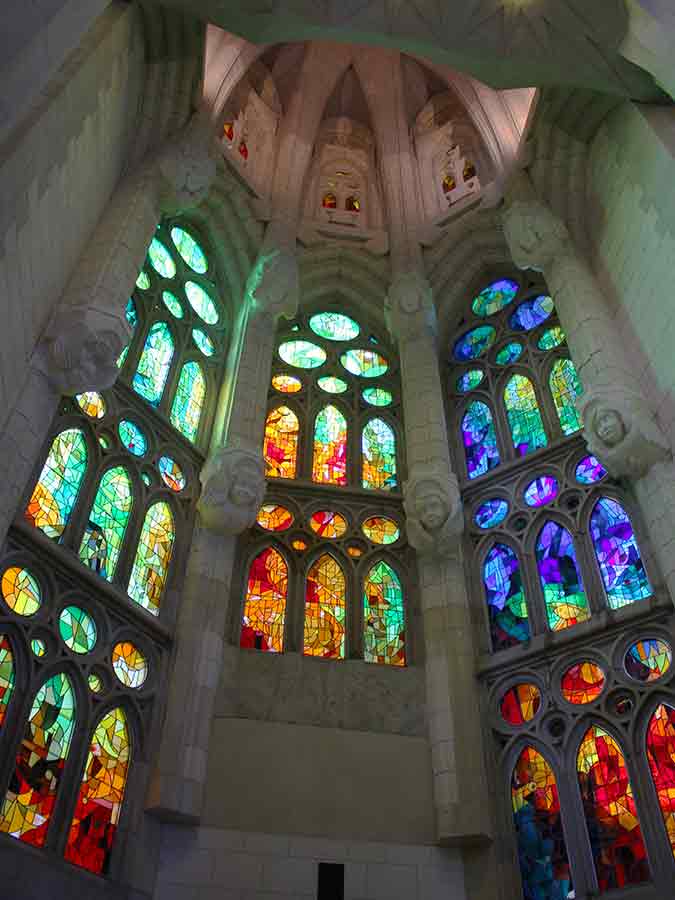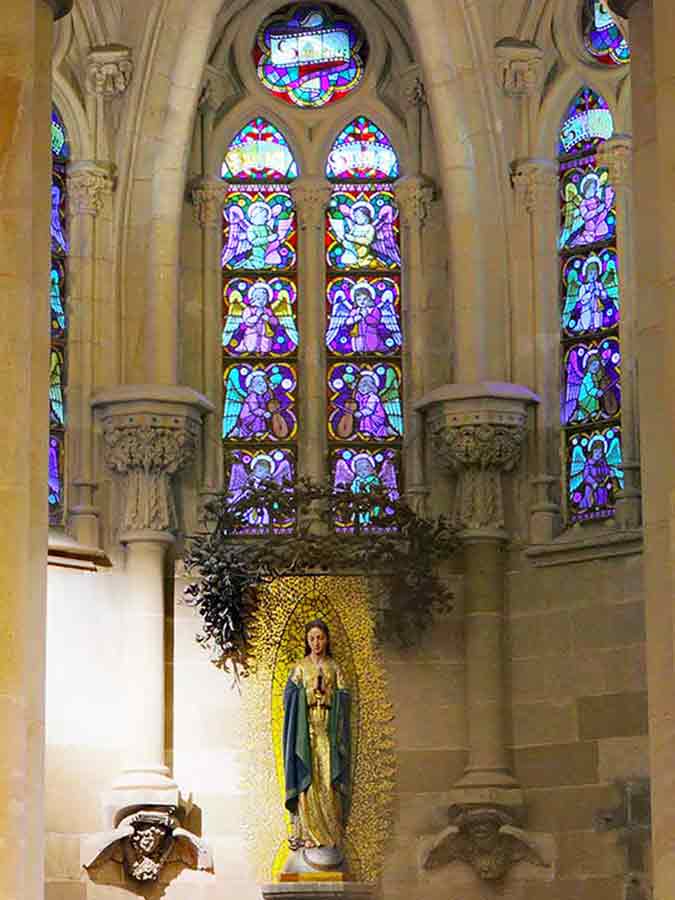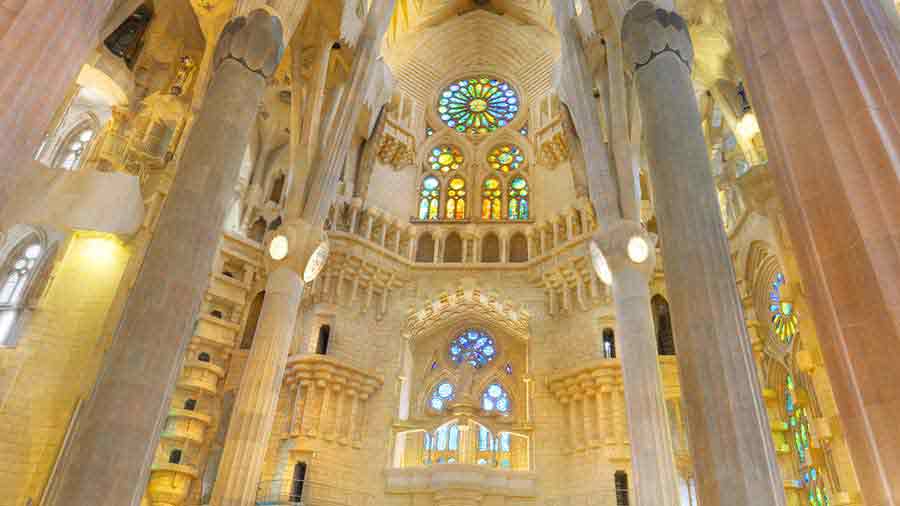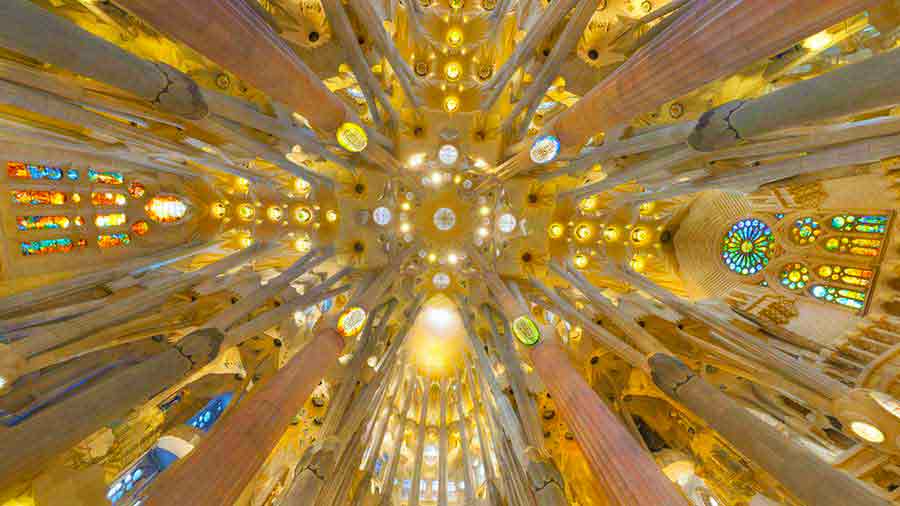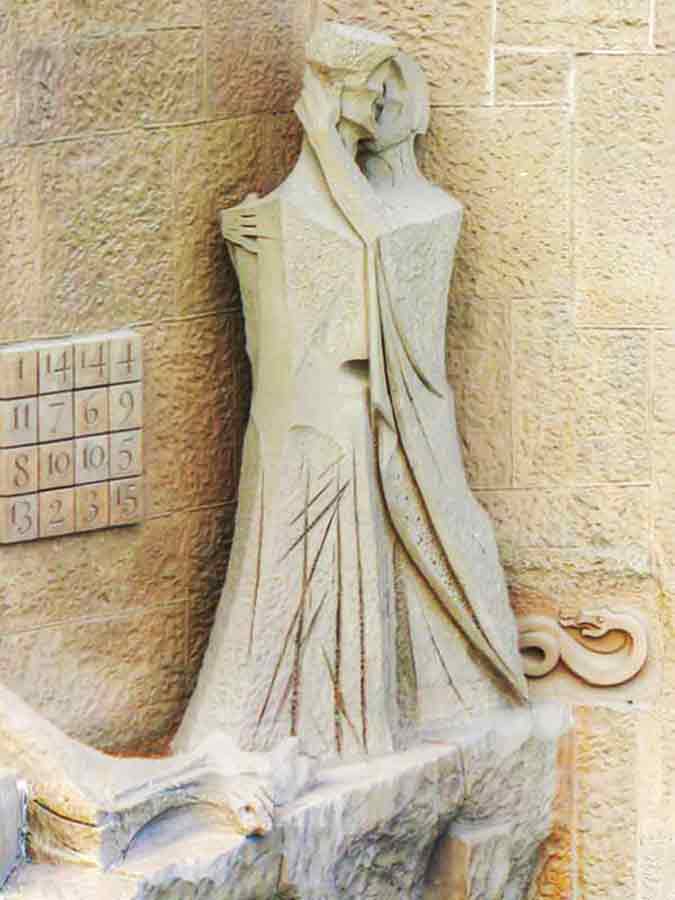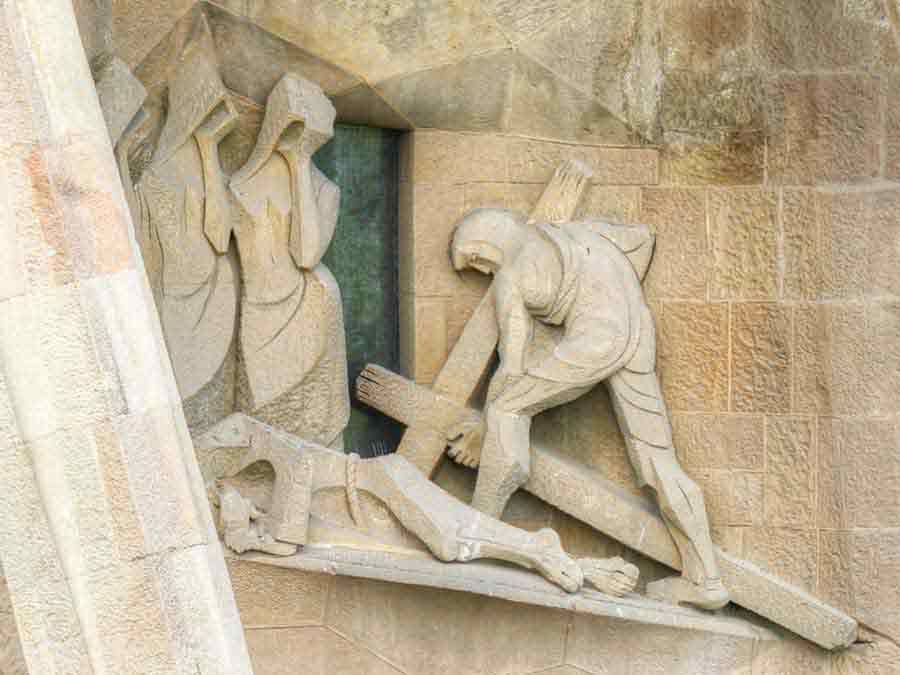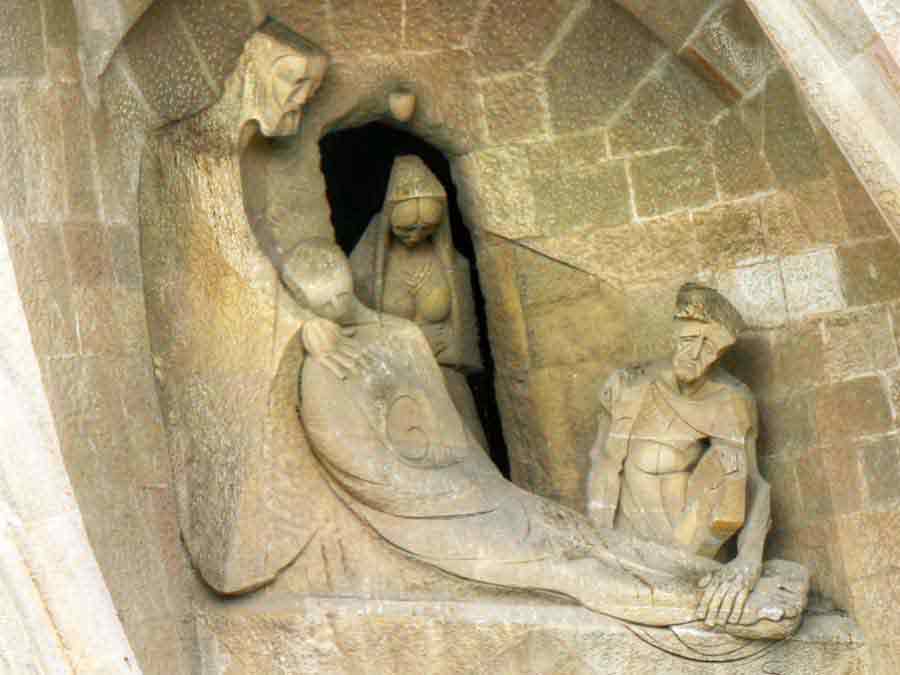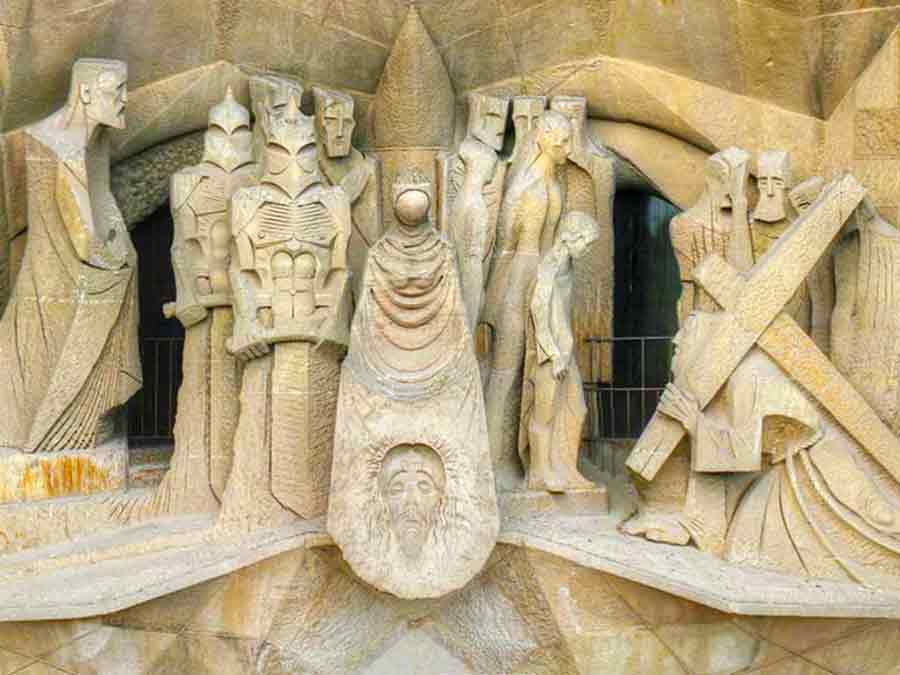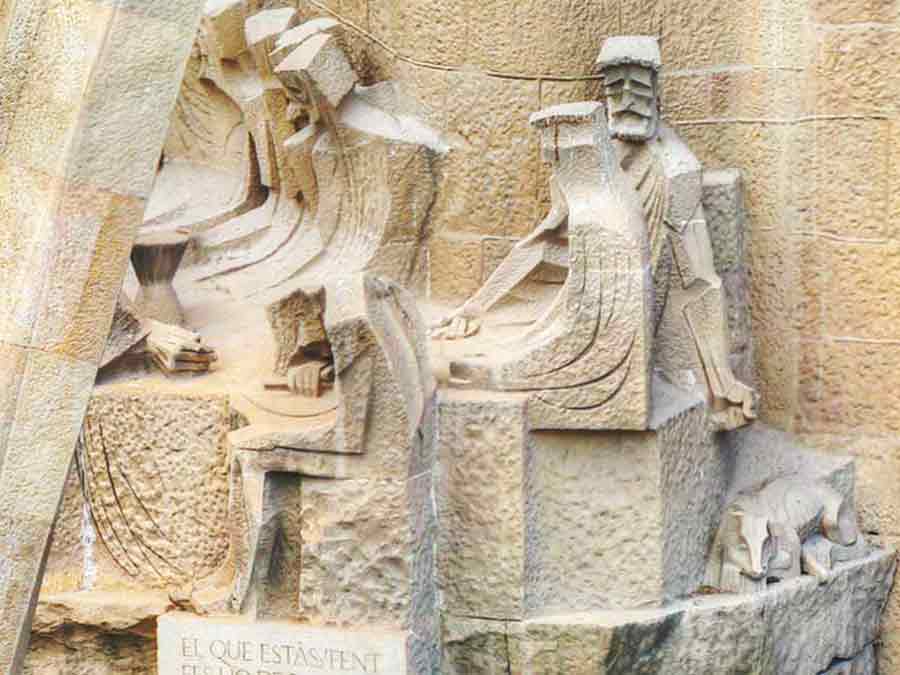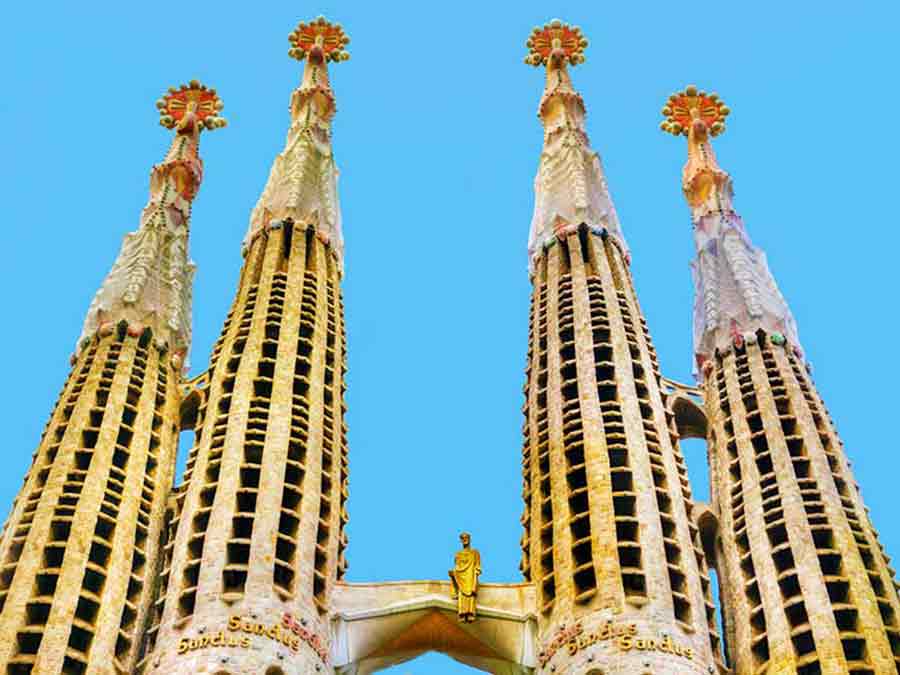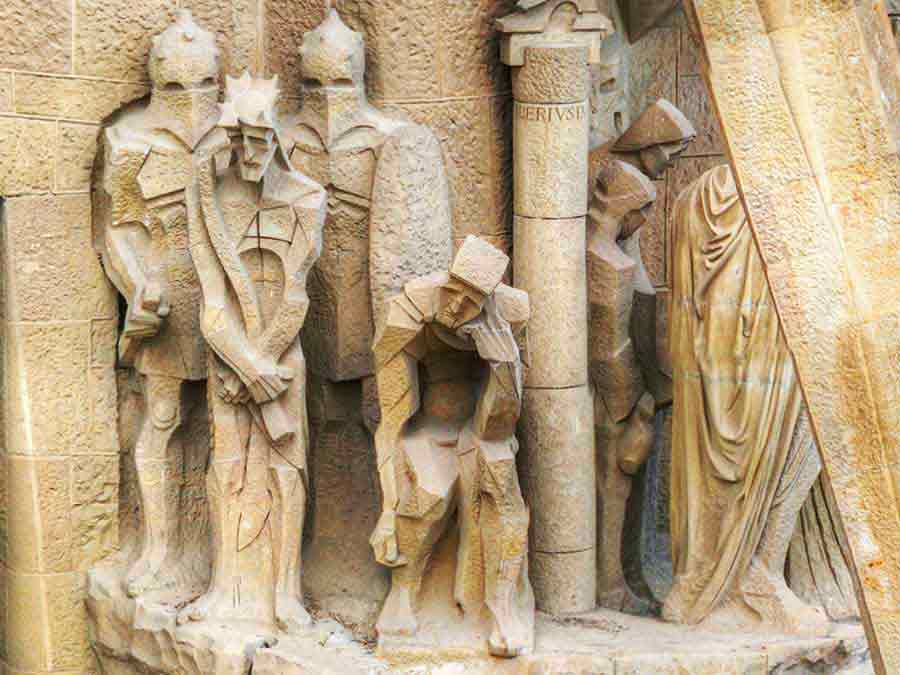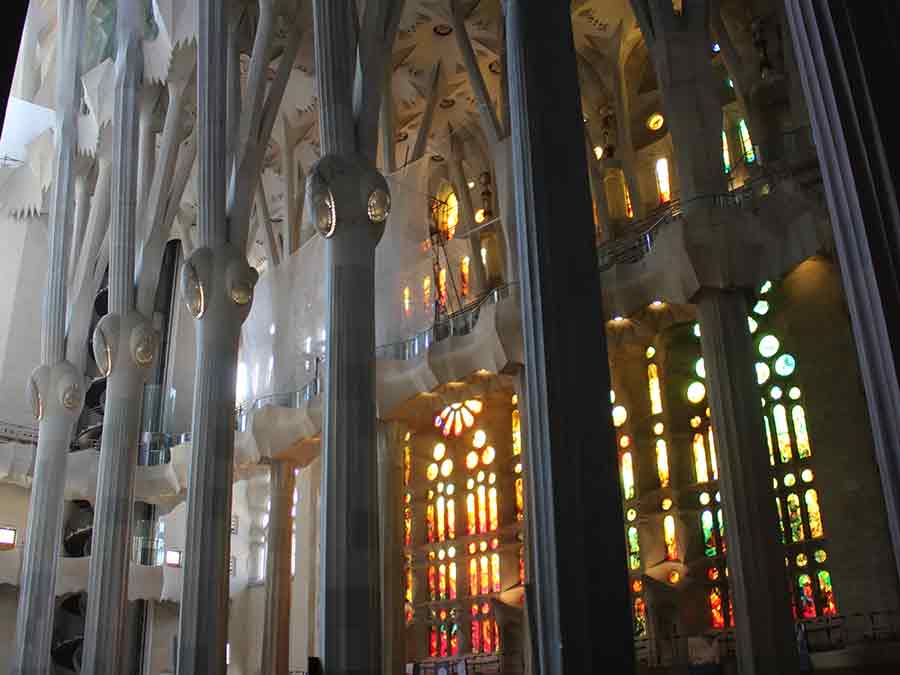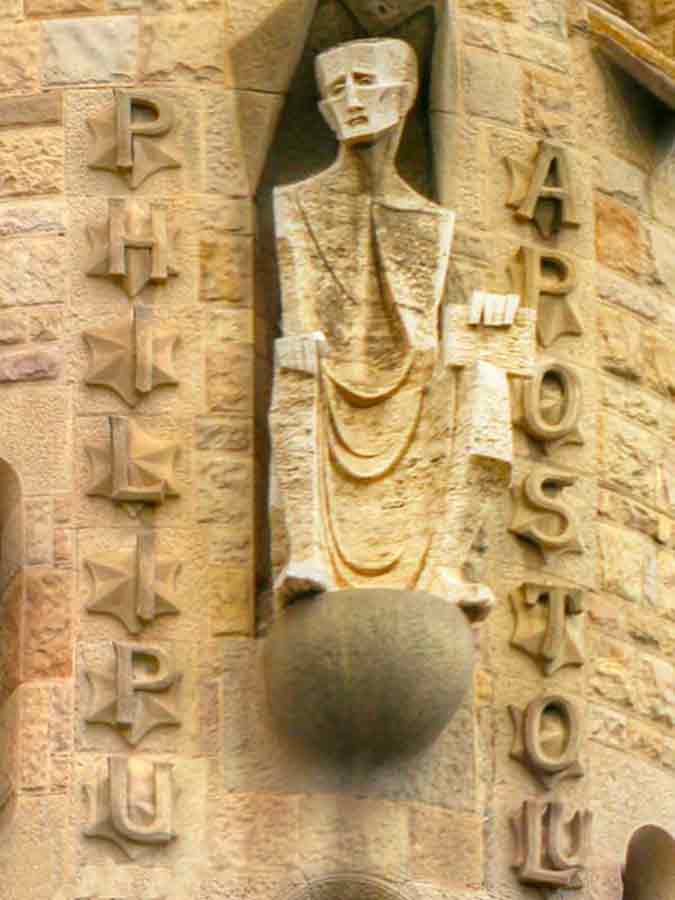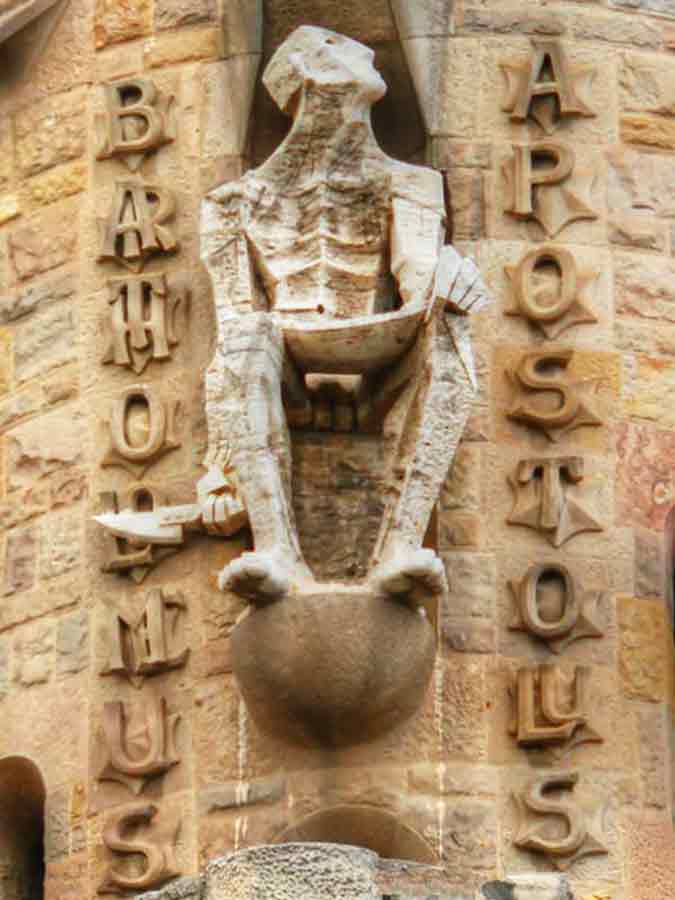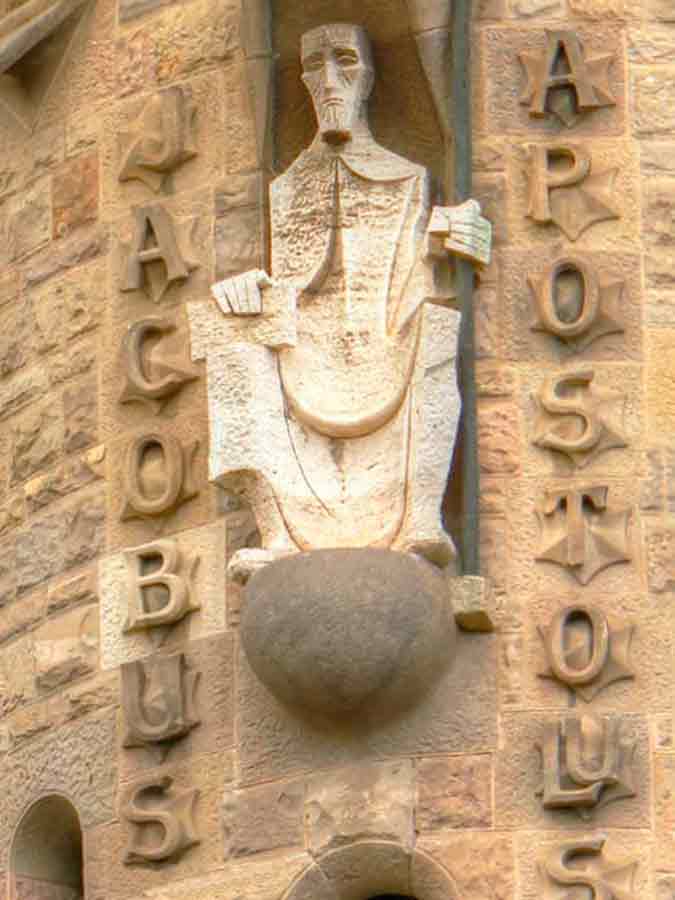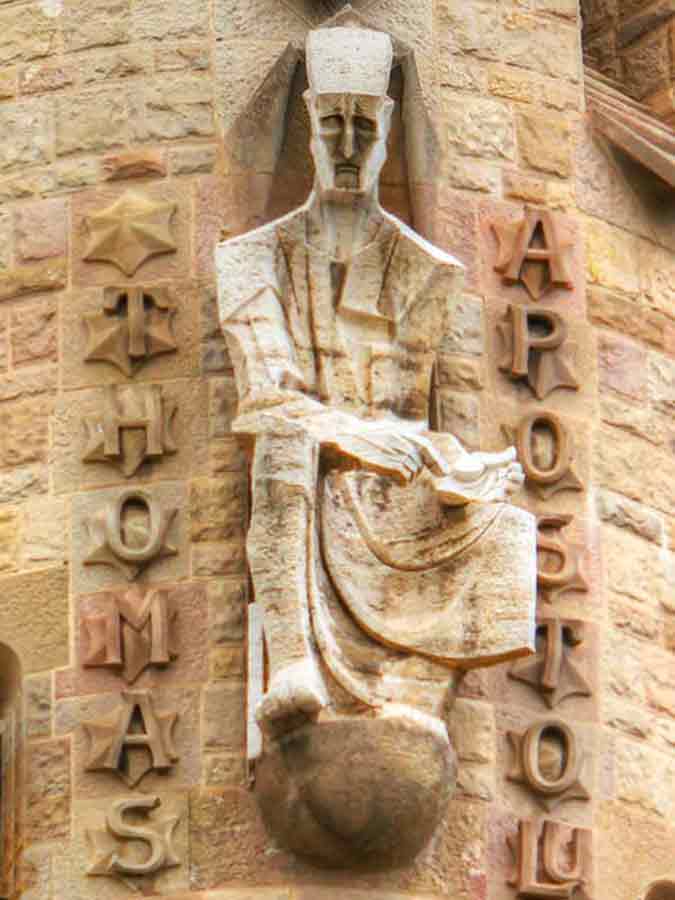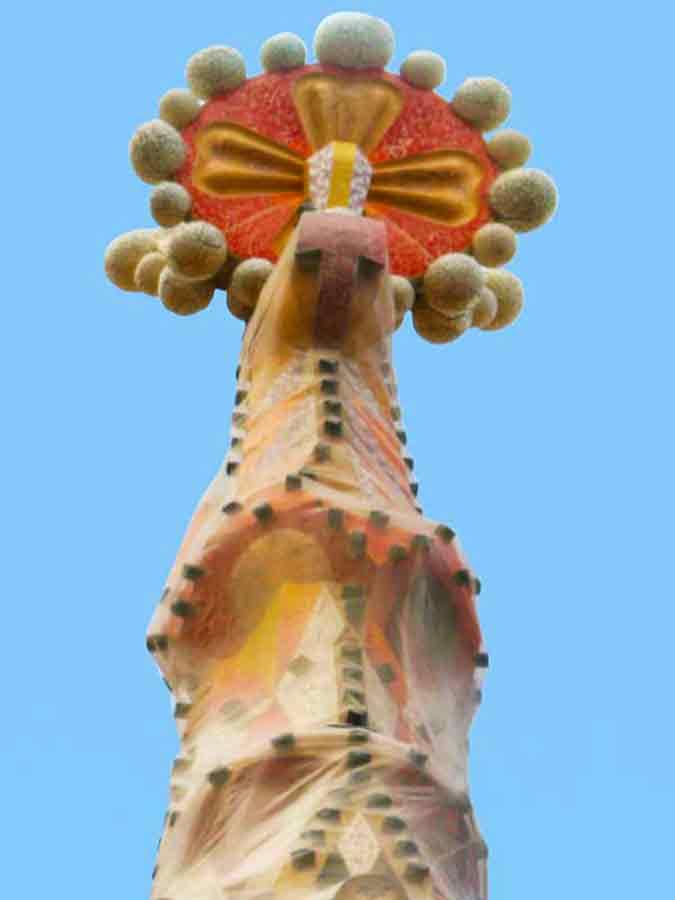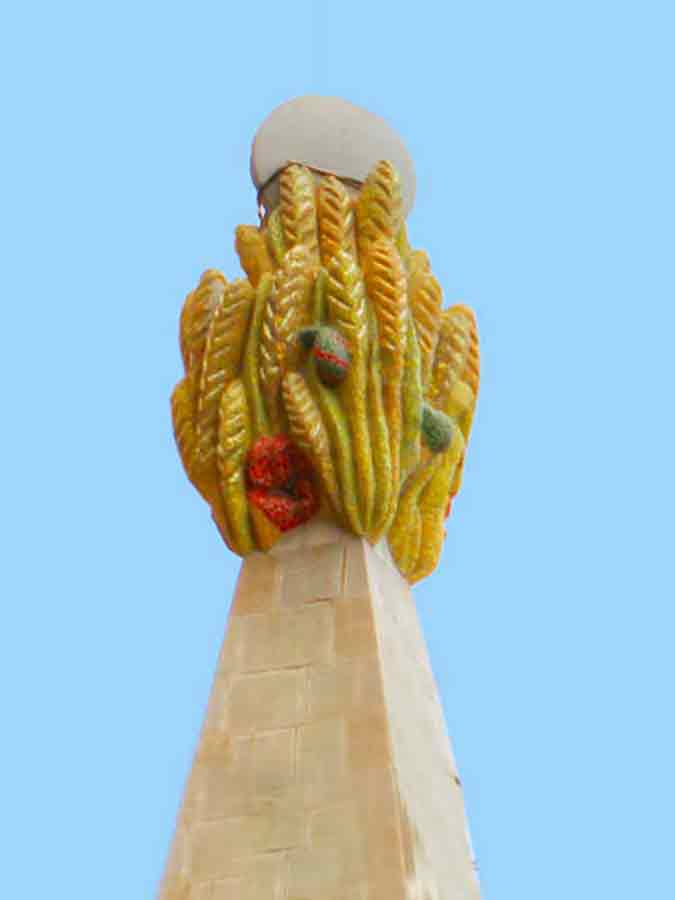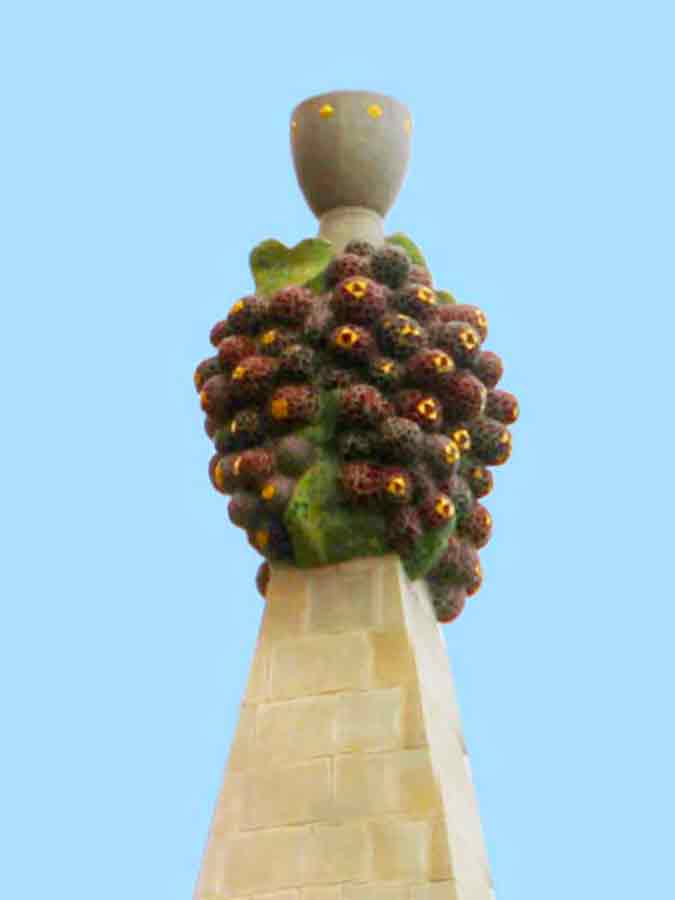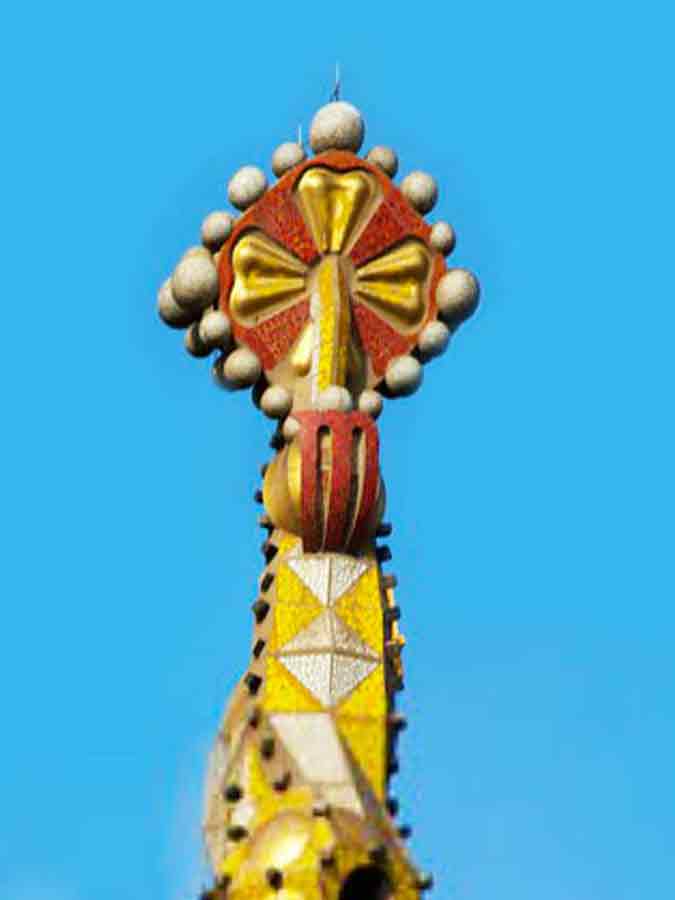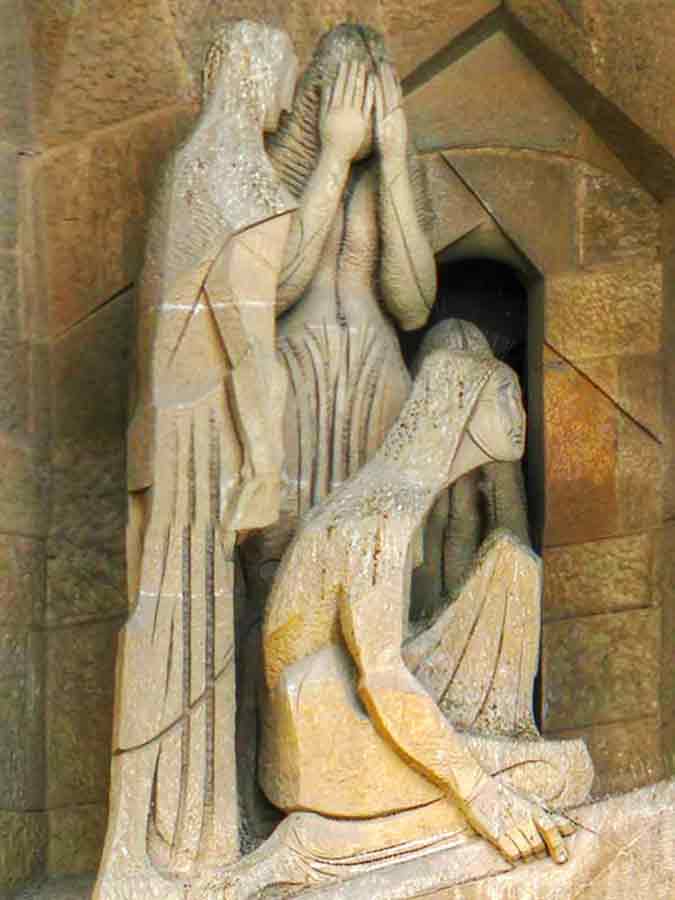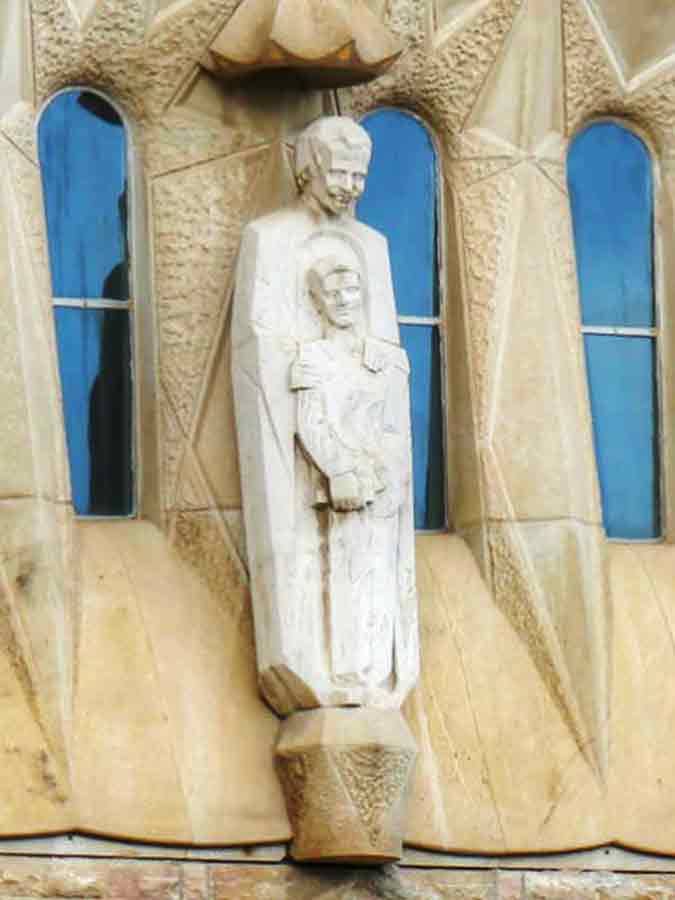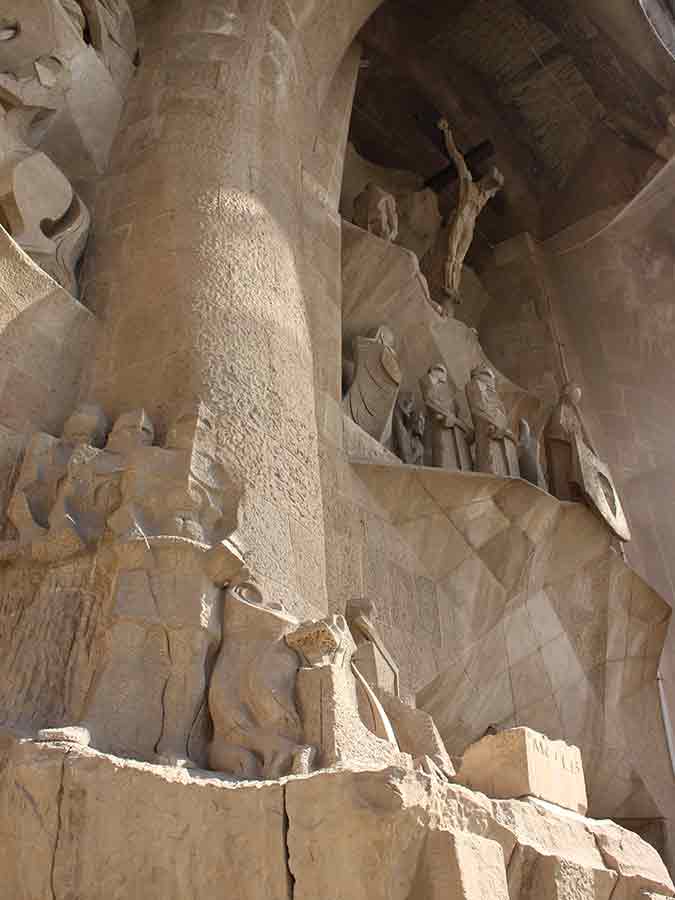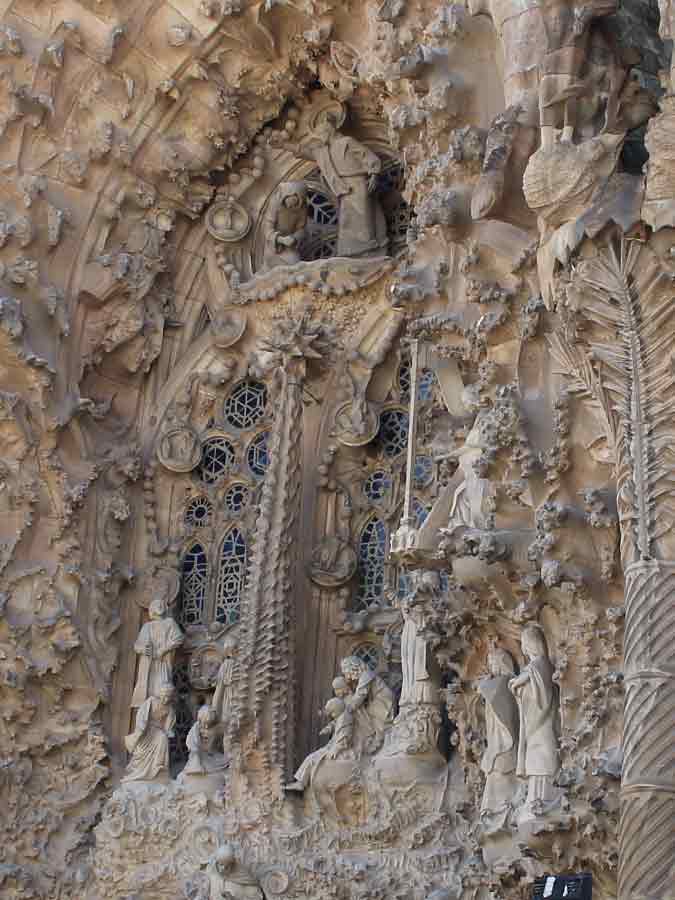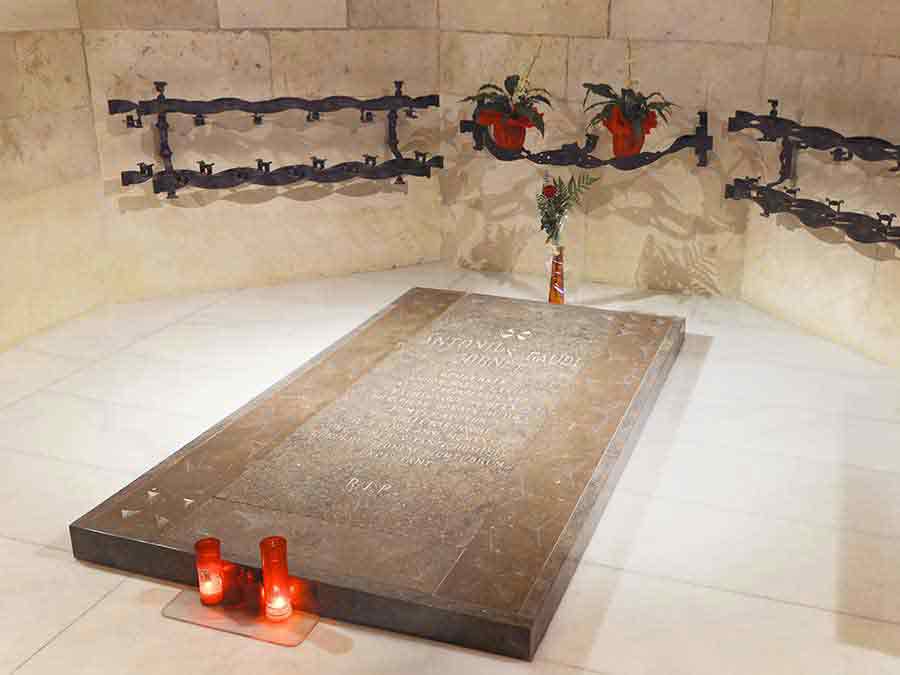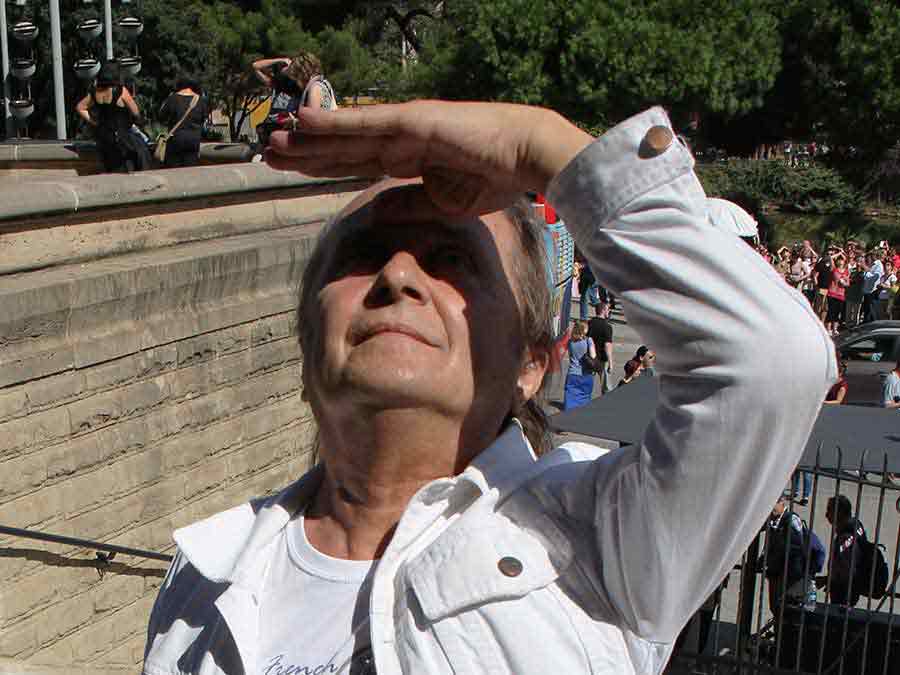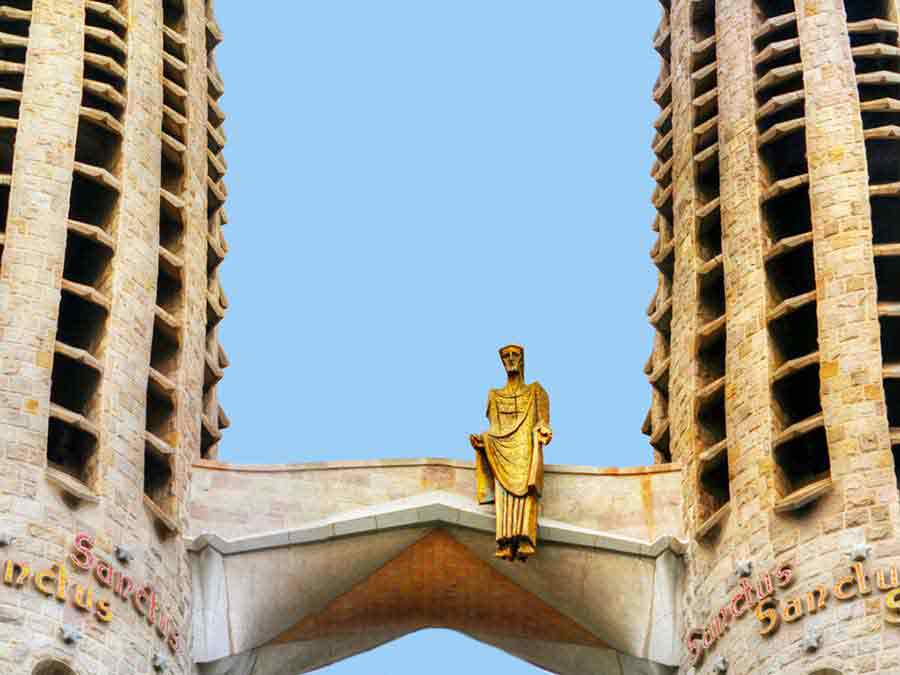Antoni Gaudi's Sagrada Familia - A Barcelona Wonder
The Sagrada Familia in Barcelona is Antoni Gaudí's most famous and awe-inspiring masterpiece. With its unique style featuring organic shapes, intricate details, and innovative use of materials, the basilica is a true wonder of architecture. Gaudí dedicated over 40 years of his life to the Sagrada Familia, from 1883 until his passing in 1926, yet the building remains unfinished to this day.
The Sagrada Familia is a testament to Gaudí's unparalleled talent, with its towering spires, intricate facades, and stunning stained glass windows that fill the interior with vibrant colors and light. Gaudí's innovative use of parabolic arches and structural systems allows the building to reach incredible heights, while his meticulous attention to detail ensures that every element of the design is harmonious with the whole.
As you explore my photo-reportage, you may sense the radiant genius of Gaudí that permeates through the Sagrada Familia and is reflected in every photograph.
Antoni Gaudi - A Genius Ahead of His Time in Architecture
Antoni Gaudi, the Catalan architect, was a true visionary in the field of architecture. From an early age, he had a fascination with nature, its shapes, colors, and geometry. His works, including private residences such as Casa Vicens and Park Güell, as well as residential buildings like Casa Calvet, Casa Batllo, and Casa Mila, showcase his unique approach to modern architecture.
Gaudi's work goes beyond Gothic architecture, incorporating geometric and structural elements, wavy lines, and a harmony of colors and materials. He was a true artist who was ahead of his time and often misunderstood by his contemporaries. Gaudi's legacy continues to inspire architects and artists around the world, making him one of the most influential figures in the history of architecture.
The Magnificent Interior of Sagrada Familia
The interior of Sagrada Familia is an awe-inspiring sight to behold. The colorful light that floods the space comes from the stained glass windows that are placed high up on the walls. The warm tones of red, yellow, and orange blend together to create a magical atmosphere. The vaulted ceiling is made up of intricate, curving arches that look like branches of trees reaching towards the sky.
These unique shapes and patterns are inspired by nature and give the space a feeling of organic harmony. The focal point of the interior is the stunning altar, which is framed by a golden canopy and features a beautiful sculpture of Jesus Christ. The sculpture is carved in white stone and has a serene expression that radiates peace and compassion. The altar is surrounded by smaller chapels, each with its own unique atmosphere and artwork.
The Incredible Detail of Sagrada Familia's Facades
The facades of Sagrada Familia are a testament to Antoni Gaudi's incredible attention to detail. The Nativity facade is the most ornate and features intricate sculptures of animals, plants, and scenes from the birth of Jesus Christ. The Passion facade, on the other hand, is much more austere, with sharp angles and minimal decoration that reflects the suffering and sacrifice of Christ.
The Glory facade, which is still under construction, will be the most grandiose of all. It will depict the final judgment and the entrance to heaven, with large sculptures of angels, saints, and biblical figures. The facade will be the culmination of Gaudi's vision for Sagrada Familia and will be an incredible achievement when it is completed.
Antoni Gaudi's Legacy in Sagrada Familia
Antoni Gaudi's legacy is evident in every aspect of Sagrada Familia. His innovative use of materials, organic shapes, and intricate details have made the basilica a true masterpiece of architecture. Gaudi worked on the project for over 40 years, from 1883 until his death in 1926, and his vision for Sagrada Familia is still being realized today.
The unfinished nature of the basilica is part of its charm, as it allows visitors to see the construction process in action and to imagine what the finished product will look like. Gaudi's dedication to his craft and his passion for nature and beauty are evident in every corner of Sagrada Familia, making it a must-see destination for anyone interested in art and architecture.
The Remarkable Towers of Sagrada Familia
The towers of Sagrada Familia are one of the most recognizable features of the basilica. They are designed to look like the branches of trees reaching towards the sky, and each tower is topped with a unique sculpture or cross.
The towers are so tall that they can be seen from almost anywhere in Barcelona, and their intricate details and colors are a sight to behold. The towers are also functional, serving as bell towers and providing natural ventilation for the interior of the basilica. The spiral staircases that wind up the towers offer incredible views of the city and are a popular attraction for visitors.
Spanish Civil War
During the Spanish Civil War (1936-1939), Barcelona was a hotbed of political conflict between the Nationalist forces led by General Francisco Franco and the Republican forces. The city was a stronghold of left-wing and anarchist movements, which led to significant violence and upheaval during the conflict.
One of the casualties of this violence was Antoni Gaudí's studio, located in the basement of the Sagrada Familia. In July 1936, just weeks after the outbreak of the civil war, a group of anarchists stormed the studio and set fire to its contents. The studio was completely destroyed, along with many of Gaudí's original plans and models for the Sagrada Familia.
This destruction was likely motivated by the anarchists' opposition to organized religion and their view of Gaudí as a symbol of the wealthy and aristocratic classes. However, many historians and artists have lamented the loss of Gaudí's original designs and the impact that their destruction had on the completion of the Sagrada Familia.
Despite the destruction of his studio, Gaudí's legacy has endured in Barcelona and beyond. His unique style and approach to architecture continue to inspire artists and architects around the world, and his buildings remain some of the most visited and celebrated landmarks in Spain.
Antoni Gaudí's life and work were cut tragically short by an unexpected and devastating accident. On 7 June 1926, Gaudí was struck by a tram while walking near the intersection of Gran Via de les Corts Catalanes and Carrer de Bailèn. The collision left him with serious injuries, and he was rushed to the Hospital de la Santa Creu. Despite the best efforts of the medical staff, Gaudí passed away three days later.
The news of Gaudí's death sent shockwaves through the artistic and architectural communities of Barcelona and beyond. Tributes poured in from all over the world, with people praising Gaudí's genius, his innovation, and his vision. His funeral procession was attended by thousands of people, who wanted to pay their respects to the man who had transformed the city's skyline with his breathtaking buildings.
Today, Gaudí's legacy lives on in the magnificent structures he created, including the iconic Sagrada Familia. As visitors wander through the basilica's soaring spaces and marvel at its intricate details, it's easy to see why Gaudí's work continues to inspire and captivate people from all walks of life. And although he may be gone, his impact on the world of architecture will be felt for generations to come.
